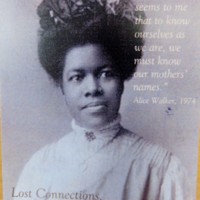
Lost Connections
A play by the Malcolm X Elders Theatre Company in Bristol, addressing issues of age, identity and heritage.
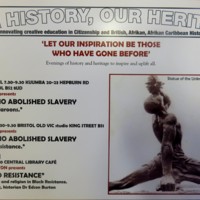
Our History, Our Heritage
Our History, Our Heritage was a black-led Bristol group promoting historical awareness of the contributions of African, African-Caribbean and British peoples in past and present struggles, and in Bristol in particular. Their series of talks and educational initiatives sought to encourage 'creative education in Citizenship and British, Afrikan, Afrikan Caribbean History', taking inspiration from 'those who have gone before'.
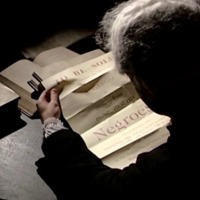
Clarkson
A group of Bristol Film and Video Society members wrote Clarkson, a 40 minute drama based on the life of the abolitionist Thomas Clarkson. The character study is set in Bristol in 1787, around the time that Clarkson was visiting English ports gathering evidence about the brutalities of the slave trade.
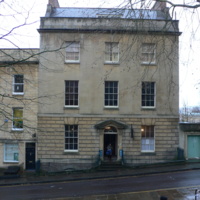
The Georgian House
The Georgian House was built in around 1790 for a plantation owner and sugar merchant named John Pinney (1740-1818), who settled in Bristol when he left Nevis. Two black servants, one bought as a child, the other born on Pinney’s Nevis plantation, also lived and worked in the house: Pero Jones (c.1753-1793) and Fanny Coker (1767-1820). Fanny had been given her freedom at the age of 11, Pero remained enslaved.
The House was presented to the city in 1937 and Bristol City Council has operated the site as a period-house museum since 1939. Rooms are open to visitors across four floors, and it is divided into life above and below stairs. Life above stairs features rooms such as the Dining Room and Drawing Room across the upper three floors, while life below stairs has the kitchen and housekeeper’s rooms in the basement. Information cards provide details about the objects within the rooms including furniture and paintings, and some information on the people who lived there. It is located in central Bristol near the University and Cathedral.
On the second floor there is a small 2D exhibition, in a room next to the bedroom, giving information on the family, the Nevis plantations, and the black servants. Panels have been present in the room since the 1990s, but they were updated and re-installed in April 2018. A large board features the names of the known enslaved people on the Pinney plantations over 200 odd years, and a graphics panel covers nine topics including Bristol and Slavery, John Pinney, Pero Jones, Fanny Coker, Hard Labour and Resistance. They connect the site, and city, to Transatlantic Slavery, through the stories of individual people.
In addition to this display there are implicit and explicit references to slavery throughout the house. Slavery is included on the introductory board and first information card on John Pinney. There are also objects, particularly downstairs, including a sugar cone in the larder and a newspaper discussing the slave trade on the kitchen table. Further audio and information is planned to be added at the house, which will tell more about the slavery connections of the family and house.
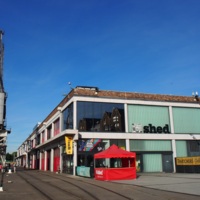
M Shed
M Shed opened in 2011 and is housed in a warehouse on Bristol’s dockside, a clear and tangible link to the history it interprets. The free-to-enter museum focuses on social history, exploring the development of Bristol as a city through people, places and daily life. It is a popular site, attaining over half a million visitors per year since 2013.
Through this local viewpoint, the museum explores Bristol’s involvement with the transatlantic slave trade and the abolition movement in its ‘Bristol People’ gallery which aims to ‘explore the activities past and present that make Bristol what it is.’ Voices from all factions of the slavery debate feature in the display, with proslavery, the enslaved, particularly those who fought for emancipation, and abolitionists all interpreted within dedicated cases. Each case contains a mix of objects, archive materials and text panels to tell the story. Quotations from key figures also bring to life the voices of those who were personally involved: for example, John Pinney, a plantation owner and sugar agent; Hannah More, a writer and Abolition campaigner; John Kimber, a slave ship captain accused (and acquitted) of murder; Silas Told, an ordinary sailor on slaving voyages. These Bristolian voices give different perspectives on how those involved in the trade saw it at the time. Quotations printed around the gallery also provide the views of today’s visitors to the trade. The exhibition also has sections about the legacies of the slave trade within Bristol, particularly in relation to the representation of African or Afro-Caribbean communities in popular culture, the presence of racism in the city, and the legacies of prominent slave owners in some of Bristol's public institutions.
The theme of antislavery also features as the starting point for a display on public protest movements. One case focusses on Thomas Clarkson’s visit to Bristol to collect information against the trade, another on the campaign to abstain from slave-produced sugar in the 18th century and the Bristol bus boycott against racist employment practices in the 20th century. This display then goes on to look at other popular campaigns and protest movements including women’s suffrage, riots, strikes and the Occupy movement. This perspective, situating the abolition campaign as the beginning of a British tradition of society campaigning, is a unique one across UK museums.
In the Bristol Life gallery, the stories of two Black Bristolians look at the new life for the runaway enslaved man, Henry Parker, and the Windrush generation Princess Campbell.
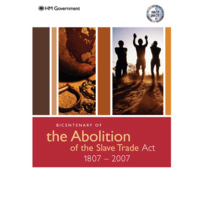
Bicentenary of the Abolition of the Slave Trade Act 1807-2007
The official publication from the British Government in response to the bicentenary included a message from Prime Minister Tony Blair. It set out the history of transatlantic slavery and resistance to it, and featured a calendar of upcoming events for 2007 relating to slavery and abolition. The publication also detailed contemporary efforts to end modern slavery. Later in 2007, 'The way forward: bicentenary of the abolition of the Slave Trade Act 1807-2007' reflected on some of the commemorative activity that had taken place in Bristol, Hull, Liverpool, London and Greater Manchester. With a foreword by the new Prime Minister, Gordon Brown, the theme of the publication was 'Reflecting on the past, looking to the future' and it linked efforts for the abolition of historical and contemporary slavery. The publication also looked to how to tackle inequality and poverty in the UK, Africa and the Caribbean.
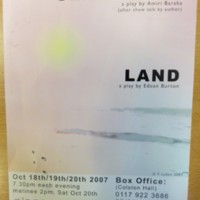
Slave Ship and Land
Two plays, Slave Ship by Amiri Baraka and Land by Edson Burton, were presented in Bristol by Say It Loud, a multicultural arts development organisation. Slave Ship was first performed in the United States in 1967. Land was written especially for the bicentenary project. In conjunction with the project, Say It Loud organised drama workshops on the subject of slavery in Bristol schools.
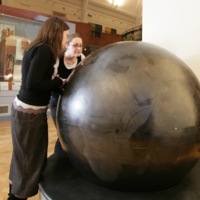
Blue Earth 1807-2007
The sculpture Blue Earth 1807-2007 by African artist Taslim Martin was permanently installed in the newly updated African Worlds Gallery at the Horniman Museum in 2007, to mark the bicentenary. The large iron globe, inscribed with the 18th century image of the slave ship Brookes, traces the routes along which enslaved Africans were transported to the New World, alongside the movement of the products of enslaved labour. The major British ports of Liverpool, London and Bristol are depicted, as well as ports in West Africa and some of the destination ports in North America, the Caribbean and South America. Visitors are encouraged to spin the globe to view slave routes across the world. In 2007-2008, the Horniman Museum also hosted 'La Bouche du Roi' by Romuald Hazoumé.
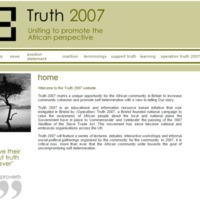
Truth 2007: Uniting to promote the African perspective
Truth 2007 was an educational and information resource-based initiative that was instigated in Bristol by (Operation) Truth 2007 led by Jendayi Serwah. It became a national coalition of UK-based Pan-African organisations which aimed to raise the awareness of the African perspective on local and national government plans to mark the bicentenary. Truth 2007 featured a series of lectures, debates, interactive workshops and informal social-political gatherings organised by community groups. The Truth 2007 coalition expressed dissatisfaction with much of the terminology and focus of the 'official' commemorations.
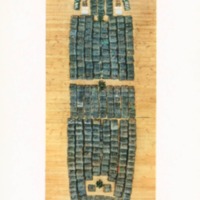
La Bouche du Roi
La Bouche du Roi was created by artist Romauld Hazoumé, who lives and work in the Republic of Benin, West Africa. The multi-media artwork is named after a place on the coast of Benin from where enslaved Africans were transported. It comprised 304 plastic petrol can 'masks', each representing a person, arranged in the shape of the woodcut of the Liverpool slave ship Brookes. The aroma of tobacco and spices are represented alongside the terrible smells of a slave ship. The artwork was accompanied by a film showing the motorcyclists who transport petrol illegally between Nigeria and the Republic of Benin. The cans and motorcyclists are metaphors for modern forms of enslavement and resistance. First exhibited at the British Museum in London, La Bouche du Roi toured to the following venues during 2007-9: Ferens Art Gallery in Hull, International Slavery Museum in Liverpool, Bristol's City Museum and Art Gallery, Laing Art Gallery in Newcastle, and the Horniman Museum in London.
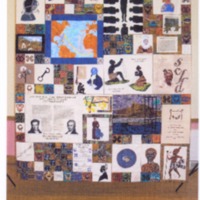
In Stitches
The In Stitches project was led by the African Families Foundation (TAFF) and brought together British, African and African-Caribbean women's quilting groups meeting in London, Liverpool, Bristol, Manchester and Birmingham. The In Stitches Quilt, designed by Janice Gunner, included 60 squares of embroidered images, texts and symbols, depicting historic figures, scenes and artefacts associated with the transatlantic slave trade and its abolition. The Quilt used several of the Adinkra symbols from Africa, originally printed on fabrics worn at funerals by the Akan peoples of Ghana. The accompanying work pack was designed to support learning about slavery based on the four themes of the Quilt: Capture, the Middle Passage, Life in the 'New World', and Proscription of Slavery. The Quilt was unveiled at City Hall in London, and then toured to the British Empire and Commonwealth Museum (Bristol), Central Library (Liverpool), Soho House (Birmingham), the International Quilt Festival (Birmingham) and Central Library (Manchester).
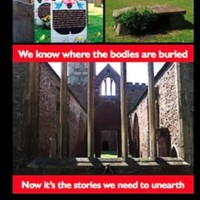
Diverse Stories
The Diverse Stories project began in 2007 with participants from Malcolm X Elders, an Afro Caribbean elders and community group in Bristol, taking part in a creative writing project to mark the bicentenary. This was jointly supported by Show of Strength Theatre Company, Our Stories Make Waves and English Heritage. Participants visited the ruined Temple Church in Bristol and explored its links with the slave trade and abolition movement. Their responses included a range of dramatic monologues covering themes such as slavery, racism, trade, childhood memories of Jamaica and migration from the Caribbean. These were read at a performance by a professional actor. In 2008 the project was given a permanent record by a selection of the stories being recorded on audio CD.
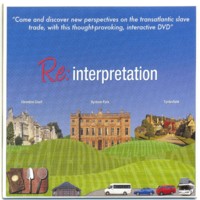
Re:interpretation
Re:interpretation was a participatory media project carried out by Firstborn Creatives in partnership with the National Trust. The project explored transatlantic slavery and its connection with three National Trust properties in South West England: Clevedon Court, Dyrham Park and Tyntesfield. It focused on the feelings and opinions of invited community groups towards those histories, who produced a range of creative responses and commentaries to their findings and also their own personal emotional responses. The project produced a multi-layered interactive exhibit, available on DVD.
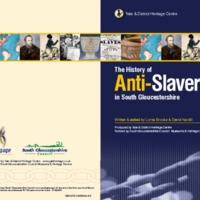
Impact: A history of anti-slavery in South Gloucestershire
This exhibition and booklet were produced as part of South Gloucestershire's Engage 2007 project, in partnership with Yate and District Heritage Centre. Both the exhibition and booklet explored local connections with the history of slavery and anti-slavery in South Gloucestershire. Links identified included the career of Robert Jenkinson of Hawkesbury (later Prime Minister Lord Liverpool), the Caribbean plantations of the Codrington family, the campaign efforts of abolitionist Joseph Sturge and, looking further back in history, St Wulfstan's attempts to abolish the trade in slaves to Ireland in the 11th century. The booklet was written and edited by Lorna Brooks and David Hardill. The exhibition toured the local area, including Thornbury and District Museum, pictured here.
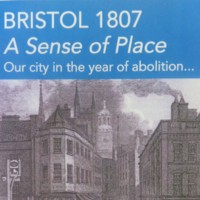
Bristol 1807: A Sense of Place
As part of the Abolition 200 programme, the Bristol 1807 project set out to explore the lives of ordinary Bristolians in 1807. An exhibition in the Central Library, and a series of touring exhibitions in Bristol's libraries and community centres explored society, culture, trade and travel in 19th century Bristol, a city and port with many ties to transatlantic slavery. The project collaborated with local schools to provide creative art workshops for children around themes of slavery and freedom. There were also 'Treasures in Store' hands-on sessions with rare library artefacts concerned with the period of abolition including books, newspapers and everyday objects. A book emerging from the project, 'Bristol in 1807: Impressions of the City at the Time of Abolition' by Anthony Beeson, was published in 2009.
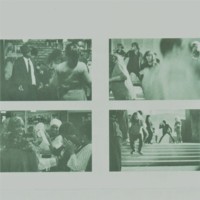
Down at the Bamboo Club: Film, Participation and Re-enactment
Down at the Bamboo Club was organised by Picture This, an artists' film and video commissioning agency in Bristol. The project was an exhibition of artists' video exploring Bristol's cultural histories and ideas of legacy. Contemporary artists worked with community groups to develop films and events that used the device of re-enactment to explore subjects such as community relations, identity, the legacy of slave trading in the city and histories of division and solidarity. One such film was 'Bamboo Memories' by Barby Asante. The Bamboo Club was a legendary Bristol nightclub in the 1960's and 1970's which holds great significance for older generations in the city as a place where first groups of African-Caribbeans socialised with white Bristolians.
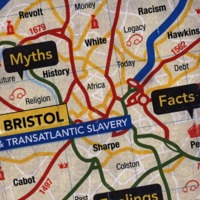
Myths, Facts, Feelings: Bristol and Transatlantic Slavery
The project to produce the booklet Myths, Facts and Feelings: Bristol and Transatlantic Slavery began in 2007. The Bristol Race Forum aimed to tackle some of the sensitivities, misunderstandings and popular opinions about the subject, and particularly in the Bristol area. The book's development went through a number of stages until it was published in 2012. The booklet and accompanying website for schools and communities across Bristol were produced with a view to sharing lessons from Bristol's past, and as a driver for future debate, activism and challenging prejudices. The contents were developed out of workshops with young people from the African Caribbean community and visits to community groups across Bristol.
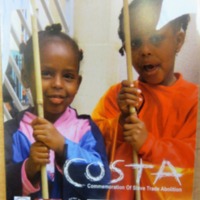
COSTA
COSTA stood for 'Commemoration of Slave Trade Abolition' and was a project of Sul'Art, a community art organisation in Bristol. Sul'Art delivered a programme of music, drama, art and dance to a number of schools and community groups to explore meanings of the bicentenary, working around themes such as migration, identity, celebration of difference, critiques of consumerism and intergenerational dialogue. Sul'Art also presented a number of performances of the professional jazz show ‘King Cotton’, dramatising the story of the cotton industry in music, song and film.
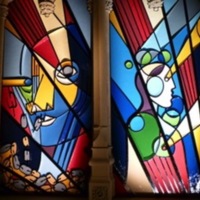
Reconciliation Reredos
The Reconciliation Reredos project to develop a major public artwork was the response by Saint Stephen’s Church in Bristol city centre to a complex historical legacy. St Stephen's was the harbour church which benefitted from merchant’s donations, which effectively ‘blessed’ slave trade ships leaving the port, and which served as the burial site for Africans living in Bristol in the era of the transatlantic slave trade. The project involved the commissioning of a new altarpiece: four pieces of contemporary artwork exploring the mercantile connections that built the city of Bristol were created by artist Graeme Mortimer Evelyn, transforming the stone-carved Victorian Reredos housed in the church since 1875. A community learning programme engaged groups of people from the city through workshops, forums and events around the four focus concepts: Creation, Imago Dei (the Image of God in humanity), Reconciliation and Hope.
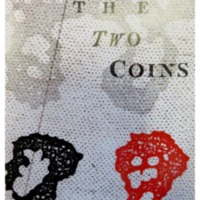
The Two Coins
A bronze statue of the slave trader Edward Colston was erected as a memorial in Bristol city centre in 1895. The monument and the memories it evokes of Colston's trading in enslaved Africans is frequently used as a point of reference for Bristol's contribution to the transatlantic slave trade. The Two Coins is a visual sculpture and moving image installation created by artist Graeme Mortimer Evelyn to revolve around such monuments. The installation aimed to present an unprejudiced historical legacy while highlighting collective responsibility to prevent forms of 21st century slavery.